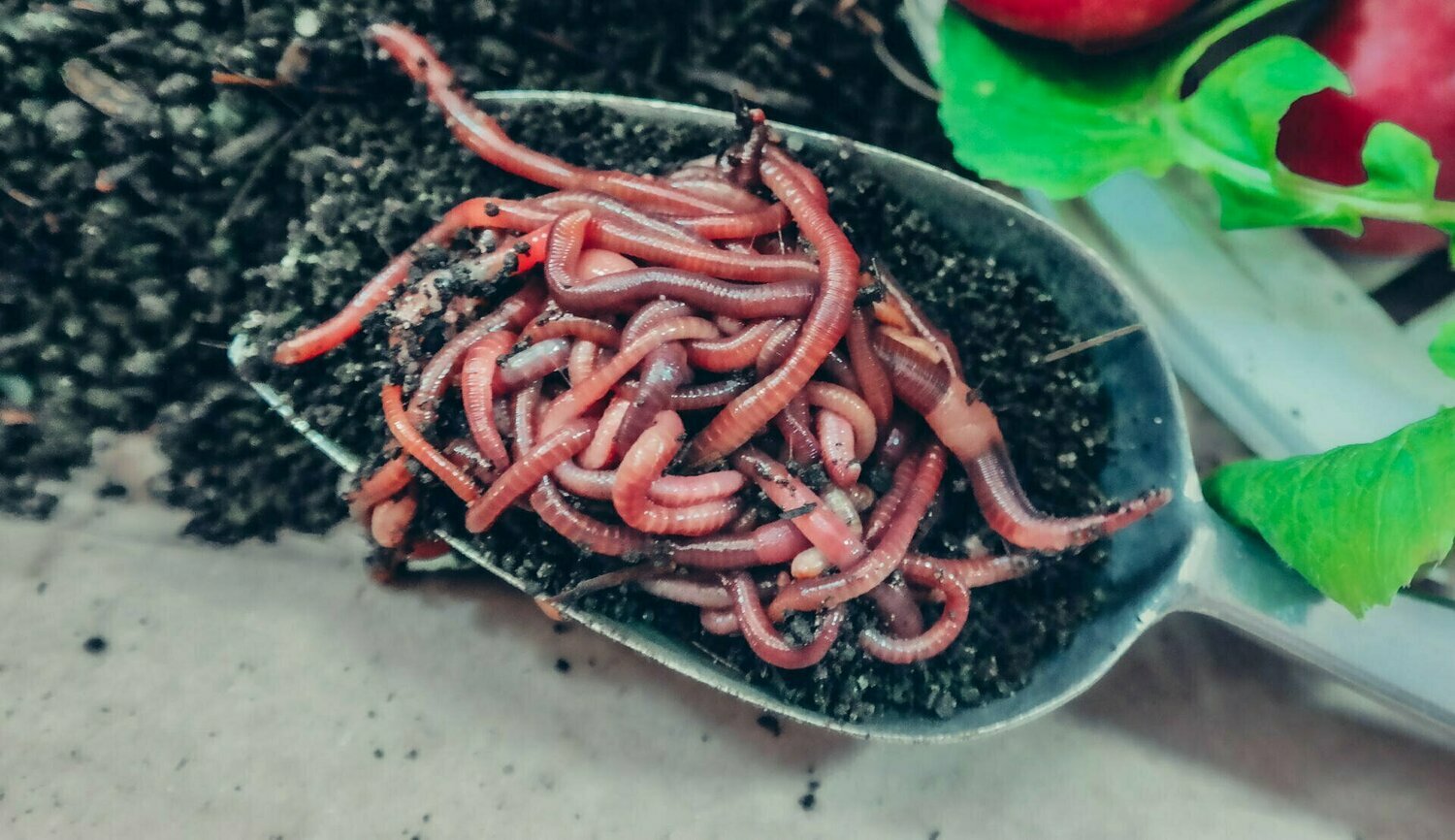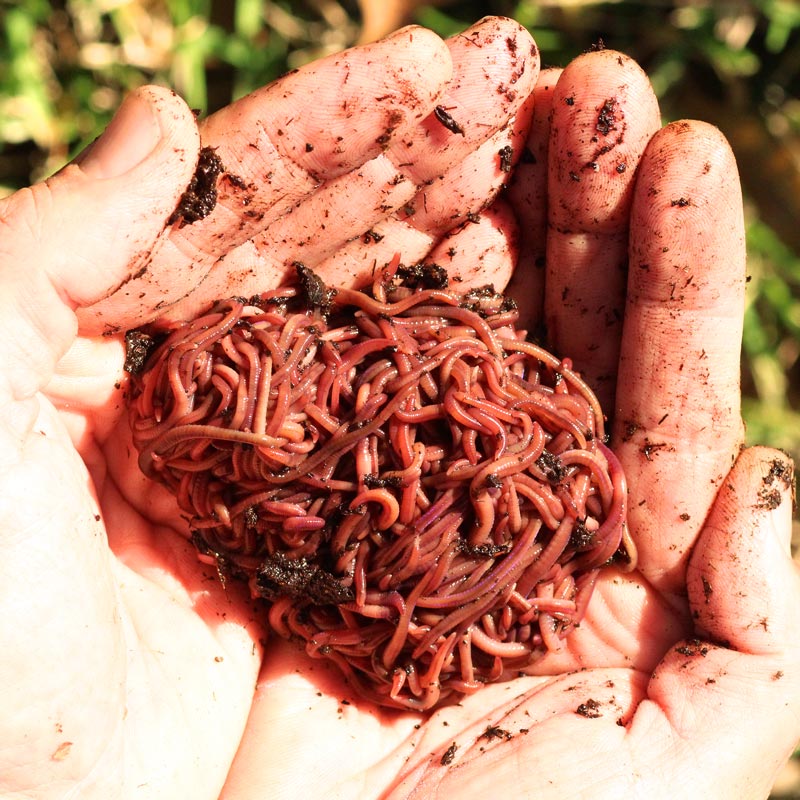Organic Composting with Red Wiggler Worms - Increase Your Yard's Growth
Organic Composting with Red Wiggler Worms - Increase Your Yard's Growth
Blog Article
Making The Most Of the Conveniences of Red Wiggler Worms: A Comprehensive Handbook for Home Gardeners and Urban Farmers
In the realm of sustainable gardening techniques, red wiggler worms stand as unhonored heroes, quietly transforming organic waste into nutrient-rich castings that can function marvels for soil health and wellness. By discovering the details of how to effectively care for and make best use of the benefits of red wiggler worms, people can unlock a riches of chances for improving the sustainability and productivity of their gardening ventures.
Recognizing Red Wiggler Worms
Red Wiggler worms, renowned for their effective composting capacities, are a varieties of earthworms widely utilized in vermiculture practices. These worms, clinically understood as Eisenia fetida, prosper in rotting natural product, making them ideal candidates for composting.
One secret feature of Red Wiggler worms is their reproductive rate. These hermaphroditic creatures have both women and male reproductive body organs, permitting them to reproduce swiftly under positive problems. A fully grown Red Wiggler can produce multiple spawn in a brief duration, making certain a steady population within a composting system.

Establishing Up a Worm Container
When developing a worm bin for vermiculture functions, correct prep work and focus to information are essential for creating a conducive environment for Red Wiggler worms. Begin by selecting an ideal container for your worm bin.

Area the worm bin in an awesome, dark area away from direct sunshine and severe temperatures. By complying with these steps, you can set up a thriving worm container that will efficiently process natural waste into nutrient-rich vermicompost for your garden.
Feeding and Preserving Worms
Guaranteeing a well balanced and nourishing diet plan is critical for the health and productivity of Red Wiggler worms in a vermiculture system. It is important to avoid feeding them citrus fruits, onions, garlic, dairy products, meat, and oily foods as these can be hazardous to the worms or create unpleasant odors in the bin.
Proper moisture levels are also crucial for the well-being of Red Wiggler worms. The bedding should feel like a moist sponge, supplying sufficient wetness for the worms to breathe through their skin. On a regular basis examine the wetness levels and readjust by including water or dry bedding material as required. In addition, preserving correct temperature conditions between 55-77 ° F(13-25 ° C )will certainly make sure ideal worm activity and recreation. By diligently checking their diet regimen, dampness, and environmental conditions, home garden enthusiasts and metropolitan farmers can sustain a efficient and healthy Red Wiggler worm populace for composting functions.
Gathering Worm Spreadings
To successfully draw out nutrient-rich worm spreadings from the vermicompost, a systematic harvesting process is crucial for optimizing the check composting benefits. The very first action in harvesting worm castings is to motivate the worms to move to one side of the bin.
After the castings have actually been collected, it is important to separate any kind of remaining worms from the castings to prevent damaging them during storage space or application. One reliable approach is to create cone-shaped heaps of castings under bright light. Worms will naturally relocate far from the light, enabling easy separation and removal.
Last but not least, the harvested worm castings must be saved in an awesome, dark, and dry location to preserve their top quality and performance as a nutrient-rich soil change. By complying with these actions, home garden enthusiasts and city farmers can optimize the advantages of red wiggler worms in their vermicomposting systems.
Making Use Of Worm Castings in Horticulture
The unification of nutrient-rich worm spreadings right into yard soil can considerably improve plant growth and overall soil health. Worm spreadings, additionally known as vermicast, are an all-natural plant food created by red wiggler worms as they break down organic matter. These castings are rich in important nutrients like nitrogen, phosphorus, potassium, and useful microorganisms that promote plant growth and improve soil framework.
When using worm spreadings in horticulture, it is vital to blend them extensively into the soil or utilize them as a leading dressing around plants. The slow-release nature of worm castings ensures a steady supply of nutrients to plants with time, lowering the danger of nutrient leaching and advertising lasting dirt fertility. Additionally, worm spreadings aid enhance soil oygenation, water retention, and microbial activity, developing a healthy and balanced environment for plant origins to prosper.

Verdict
To conclude, the use of red wiggler worms in home horticulture and urban farming can substantially profit dirt health and plant growth. By recognizing how to establish and preserve a worm container, feed the worms effectively, and harvest their nutrient-rich castings, garden enthusiasts can make the most of the benefits of these earthworms. Integrating worm spreadings right into horticulture practices can improve soil fertility and general plant performance. On the whole, red wiggler worms offer a sustainable and effective option for boosting garden and ranch yields.
In the world of sustainable horticulture techniques, red wiggler worms stand as unhonored heroes, silently transforming organic waste into nutrient-rich castings that can function marvels for dirt wellness.When developing a worm container for vermiculture functions, appropriate preparation and attention to detail are essential for developing a helpful atmosphere for Red other Wiggler worms. The very first action in collecting worm spreadings is to motivate the worms to migrate to one side of the bin. Worm spreadings, additionally understood as vermicast, are a natural fertilizer produced by red wiggler worms as they damage down organic issue. By recognizing exactly how to set up and maintain a worm container, feed the worms appropriately, and gather their nutrient-rich castings, garden enthusiasts can make best use of the advantages of these earthworms.
Report this page